
The most distant human-made object

No spacecraft has gone farther than NASA's Voyager 1. Launched in 1977 to fly by Jupiter and Saturn, Voyager 1 crossed into interstellar space in August 2012 and continues to collect data.
Mission Type

What is Voyager 1?
Voyager 1 has been exploring our solar system for more than 45 years. The probe is now in interstellar space, the region outside the heliopause, or the bubble of energetic particles and magnetic fields from the Sun.
- Voyager 1 was the first spacecraft to cross the heliosphere, the boundary where the influences outside our solar system are stronger than those from our Sun.
- Voyager 1 is the first human-made object to venture into interstellar space.
- Voyager 1 discovered a thin ring around Jupiter and two new Jovian moons: Thebe and Metis.
- At Saturn, Voyager 1 found five new moons and a new ring called the G-ring.
In Depth: Voyager 1
Voyager 1 was launched after Voyager 2, but because of a faster route, it exited the asteroid belt earlier than its twin, having overtaken Voyager 2 on Dec. 15, 1977.
Voyager 1 at Jupiter
Voyager 1 began its Jovian imaging mission in April 1978 at a range of 165 million miles (265 million km) from the planet. Images sent back by January the following year indicated that Jupiter’s atmosphere was more turbulent than during the Pioneer flybys in 1973–1974.
Beginning on January 30, Voyager 1 took a picture every 96 seconds for a span of 100 hours to generate a color timelapse movie to depict 10 rotations of Jupiter. On Feb. 10, 1979, the spacecraft crossed into the Jovian moon system and by early March, it had already discovered a thin (less than 30 kilometers thick) ring circling Jupiter.
Voyager 1’s closest encounter with Jupiter was at 12:05 UT on March 5, 1979 at a range of about 174,000 miles (280,000 km). It encountered several of Jupiter’s Moons, including Amalthea, Io, Europa, Ganymede, and Callisto, returning spectacular photos of their terrain, opening up completely new worlds for planetary scientists.
The most interesting find was on Io, where images showed a bizarre yellow, orange, and brown world with at least eight active volcanoes spewing material into space, making it one of the most (if not the most) geologically active planetary body in the solar system. The presence of active volcanoes suggested that the sulfur and oxygen in Jovian space may be a result of the volcanic plumes from Io which are rich in sulfur dioxide. The spacecraft also discovered two new moons, Thebe and Metis.
Voyager 1 at Saturn
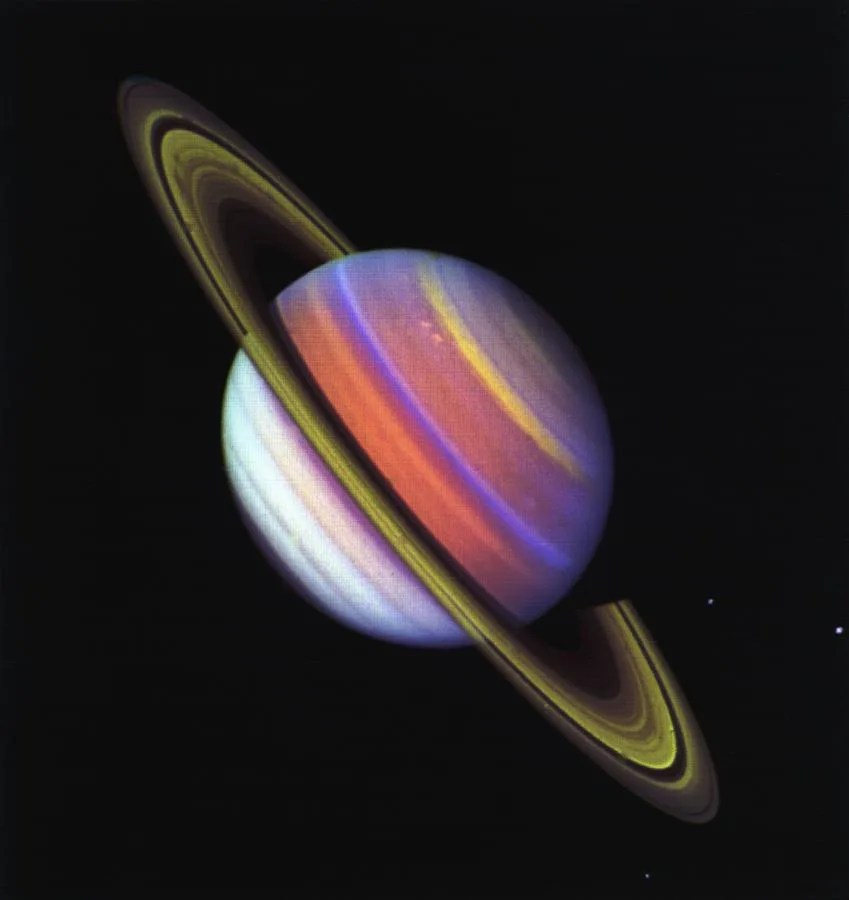
Following the Jupiter encounter, Voyager 1 completed an initial course correction on April 9, 1979 in preparation for its meeting with Saturn. A second correction on Oct. 10, 1979 ensured that the spacecraft would not hit Saturn’s moon Titan.
Its flyby of the Saturn system in November 1979 was as spectacular as its previous encounter. Voyager 1 found five new moons, a ring system consisting of thousands of bands, wedge-shaped transient clouds of tiny particles in the B ring that scientists called “spokes,” a new ring (the “G-ring”), and “shepherding” satellites on either side of the F-ring—satellites that keep the rings well-defined.
During its flyby, the spacecraft photographed Saturn’s moons Titan, Mimas, Enceladus, Tethys, Dione, and Rhea. Based on incoming data, all the moons appeared to be composed largely of water ice. Perhaps the most interesting target was Titan, which Voyager 1 passed at 05:41 UT on November 12 at a range of 2,500 miles (4,000 km). Images showed a thick atmosphere that completely hid the surface. The spacecraft found that the moon’s atmosphere was composed of 90% nitrogen. Pressure ad temperature at the surface was 1.6 atmospheres and 356 °F (–180°C), respectively.
Atmospheric data suggested that Titan might be the first body in the solar system (apart from Earth) where liquid might exist on the surface. In addition, the presence of nitrogen, methane, and more complex hydrocarbons indicated that prebiotic chemical reactions might be possible on Titan.
Voyager 1’s closest approach to Saturn was at 23:46 UT on 12 Nov. 12, 1980 at a range of 78,000 miles(126,000 km).
Voyager 1’s ‘Family Portrait’ Image
Following the encounter with Saturn, Voyager 1 headed on a trajectory escaping the solar system at a speed of about 3.5 AU per year, 35° out of the ecliptic plane to the north, in the general direction of the Sun’s motion relative to nearby stars. Because of the specific requirements for the Titan flyby, the spacecraft was not directed to Uranus and Neptune.
The final images taken by the Voyagers comprised a mosaic of 64 images taken by Voyager 1 on Feb. 14, 1990 at a distance of 40 AU of the Sun and all the planets of the solar system (although Mercury and Mars did not appear, the former because it was too close to the Sun and the latter because Mars was on the same side of the Sun as Voyager 1 so only its dark side faced the cameras).
This was the so-called “pale blue dot” image made famous by Cornell University professor and Voyager science team member Carl Sagan (1934-1996). These were the last of a total of 67,000 images taken by the two spacecraft.
Voyager 1’s Interstellar Mission
All the planetary encounters finally over in 1989, the missions of Voyager 1 and 2 were declared part of the Voyager Interstellar Mission (VIM), which officially began on Jan. 1, 1990.
The goal was to extend NASA’s exploration of the solar system beyond the neighborhood of the outer planets to the outer limits of the Sun’s sphere of influence, and “possibly beyond.” Specific goals include collecting data on the transition between the heliosphere, the region of space dominated by the Sun’s magnetic field and solar field, and the interstellar medium.
On Feb. 17, 1998, Voyager 1 became the most distant human-made object in existence when, at a distance of 69.4 AU from the Sun when it “overtook” Pioneer 10.
On Dec. 16, 2004, Voyager scientists announced that Voyager 1 had reported high values for the intensity for the magnetic field at a distance of 94 AU, indicating that it had reached the termination shock and had now entered the heliosheath.
The spacecraft finally exited the heliosphere and began measuring the interstellar environment on Aug. 25, 2012, the first spacecraft to do so.
On Sept. 5, 2017, NASA marked the 40th anniversary of its launch, as it continues to communicate with NASA’s Deep Space Network and send data back from four still-functioning instruments—the cosmic ray telescope, the low-energy charged particles experiment, the magnetometer, and the plasma waves experiment.
The Golden Record

Each of the Voyagers contain a “message,” prepared by a team headed by Carl Sagan, in the form of a 12-inch (30 cm) diameter gold-plated copper disc for potential extraterrestrials who might find the spacecraft. Like the plaques on Pioneers 10 and 11, the record has inscribed symbols to show the location of Earth relative to several pulsars.
The records also contain instructions to play them using a cartridge and a needle, much like a vinyl record player. The audio on the disc includes greetings in 55 languages, 35 sounds from life on Earth (such as whale songs, laughter, etc.), 90 minutes of generally Western music including everything from Mozart and Bach to Chuck Berry and Blind Willie Johnson. It also includes 115 images of life on Earth and recorded greetings from then U.S. President Jimmy Carter (1924– ) and then-UN Secretary-General Kurt Waldheim (1918–2007).
By January 2024, Voyager 1 was about 136 AU (15 billion miles, or 20 billion kilometers) from Earth, the farthest object created by humans, and moving at a velocity of about 38,000 mph (17.0 kilometers/second) relative to the Sun.

National Space Science Data Center: Voyager 1
A library of technical details and historic perspective.

Beyond Earth: A Chronicle of Deep Space Exploration
A comprehensive history of missions sent to explore beyond Earth.
Discover More Topics From NASA

Our Solar System

- Subscribe to BBC Science Focus Magazine
- Previous Issues
- Future tech
- Everyday science
- Planet Earth
- Newsletters
How fast are the Voyager spacecrafts travelling?
NASA's Voyage probes are speeding their way around the Solar System.
Keiron Allen
Asked by: Anonymous
Launched in 1977, NASA’s two Voyager probes surveyed Jupiter and Saturn, with Voyager 2 also visiting Uranus and Neptune before heading out of the Solar System. Voyager 1 has since become the fastest and most distant man-made object in the Universe, travelling at around 61,500km/h at a distance of 17.6 billion km from the Earth. Perhaps most incredible of all, NASA is still in communication with it, despite radio signals taking 16 hours to reach it.
Subscribe to BBC Focus magazine for fascinating new Q&As every month and follow @sciencefocusQA on Twitter for your daily dose of fun science facts.
Share this article
Food writer

- Terms & Conditions
- Privacy policy
- Cookies policy
- Code of conduct
- Magazine subscriptions
- Manage preferences
Voyager 1 Now Most Distant Human-Made Object in Space

In a dark, cold, vacant neighborhood near the very edge of our solar system, the Voyager 1 spacecraft is set to break another record and become the explorer that has traveled farthest from home.
At approximately 2:10 p.m. Pacific time on February 17, 1998, Voyager 1, launched more than two decades ago, will cruise beyond the Pioneer 10 spacecraft and become the most distant human-created object in space at 10.4 billion kilometers (6.5 billion miles.) The two are headed in almost opposite directions away from the Sun. As with other spacecraft traveling past the orbit of Mars, both Voyager and Pioneer derive their electrical power from onboard nuclear batteries.
"For 25 years, the Pioneer 10 spacecraft led the way, pressing the frontiers of exploration, and now the baton is being passed from Pioneer 10 to Voyager 1 to continue exploring where no one has gone before," said Dr. Edward C. Stone, Voyager project scientist and director of NASA's Jet Propulsion Laboratory.
"At almost 70 times farther from the Sun than the Earth, Voyager 1 is at the very edge of the Solar System. The Sun there is only 1/5,000th as bright as here on Earth -- so it is extremely cold and there is very little solar energy to keep the spacecraft warm or to provide electrical power. The reason we can continue to operate at such great distances from the Sun is because we have radioisotope thermal electric generators (RTGs) on the spacecraft that create electricity and keep the spacecraft operating," Stone said. "The fact that the spacecraft is still returning data is a remarkable technical achievement."
Voyager 1 was launched from Cape Canaveral on September 5, 1977. The spacecraft encountered Jupiter on March 5, 1979, and Saturn on November 12, 1980.
Then, because its trajectory was designed to fly close to Saturn's large moon Titan, Voyager 1's path was bent northward by Saturn's gravity, sending the spacecraft out of the ecliptic plane - the plane in which all the planets except Pluto orbit the Sun.
Launched on March 2, 1972, the Pioneer 10 mission officially ended on March 31, 1997. However NASA's Ames Research Center, Moffet Field, CA, intermittently receives science data from Pioneer as part of a training program for flight controllers of the Lunar Prospector spacecraft now orbiting the Moon.
"The Voyager mission today presents an unequaled technical challenge. The spacecraft are now so far from home that it takes nine hours and 36 minutes for a radio signal traveling at the speed of light to reach Earth,"said Ed B. Massey, project manager for the Voyager Interstellar Mission. "That signal, produced by a 20 watt radio transmitter, is so faint that the amount of power reaching our antennas is 20 billion times smaller than the power of a digital watch battery,"
Having completed their planetary explorations, Voyager 1 and its twin, Voyager 2, are studying the environment of space in the outer solar system. Although beyond the orbits of all the planets, the spacecraft still are well within the boundary of the Sun's magnetic field, called the heliosphere. Science instruments on both spacecraft sense signals that scientists believe are coming from the outermost edge of the heliosphere, known as the heliopause.
The heliosphere results from the Sun emitting a steady flow of electrically charged particles called the solar wind. As the solar wind expands supersonically into space in all directions, it creates a magnetized bubble -- the heliosphere -- around the Sun. Eventually, the solar wind encounters the electrically charged particles and magnetic field in the interstellar gas. In this zone the solar wind abruptly slows down from supersonic to subsonic speed, creating a termination shock. Before the spacecraft travel beyond the heliopause into interstellar space, they will pass through this termination shock.
"The data coming back from Voyager now suggest that we may pass through the termination shock in the next three to five years," Stone said. "If that's the case, then one would expect that within 10 years or so we would actually be very close to penetrating the heliopause itself and entering into interstellar space for the first time."
Reaching the termination shock and heliopause will be major milestones for the mission because no spacecraft have been there before and the Voyagers will gather the first direct evidence of their structure. Encountering the termination shock and heliopause has been a long-sought goal for many space physicists, and exactly where these two boundaries are located and what they are like still remains a mystery.
Science data are returned to Earth in real-time to the 34- meter Deep Space Network (DSN) antennas located in California, Australia and Spain. Both spacecraft have enough electricity and attitude control propellant to continue operating until about 2020, when electrical power produced by the RTGs will no longer support science instrument operation. At that time, Voyager 1 will be almost 150 times farther from the Sun than the Earth -- more than 20 billion kilometers (almost 14 billion miles) away.
On Feb. 17, Voyager 1 will be 10.4 billion kilometers (6.5 billion miles) from Earth and is departing the Solar System at a speed of 17.4 kilometers per second (39,000 miles per hour). At the same time, Voyager 2 will be 8.1 billion kilometers (5.1 billion miles) from Earth and is departing the solar system at a speed of 15.9 kilometers per second (35,000 miles per hour).
JPL, a division of the California Institute of Technology, manages the Voyager Interstellar Mission for NASA's Office of Space Science, Washington, D. C.

The remarkable twin Voyager spacecraft continue to explore the outer reaches of the solar system decades after they completed their surveys of the Outer Planets. Launched in 1977 (September 5 for Voyager 1 (V1) and August 20 for Voyager 2 (V2), whose trajectory took it past Jupiter after Voyager 1), the spacecraft pair made many fundamental discoveries as they flew past Jupiter (March 1979 for V1, July 1979 for V2) and Saturn (November 1980 for V1, August 1981 for V2). The path of Voyager 2 past Saturn was targeted so that it continued within the plane of the solar system, allowing it to become the first spacecraft to visit Uranus (January 1986) and Neptune (August 1989). Following the Neptune encounter, both spacecraft started a new phase of exploration under the intriguing title of the Voyager Interstellar Mission.
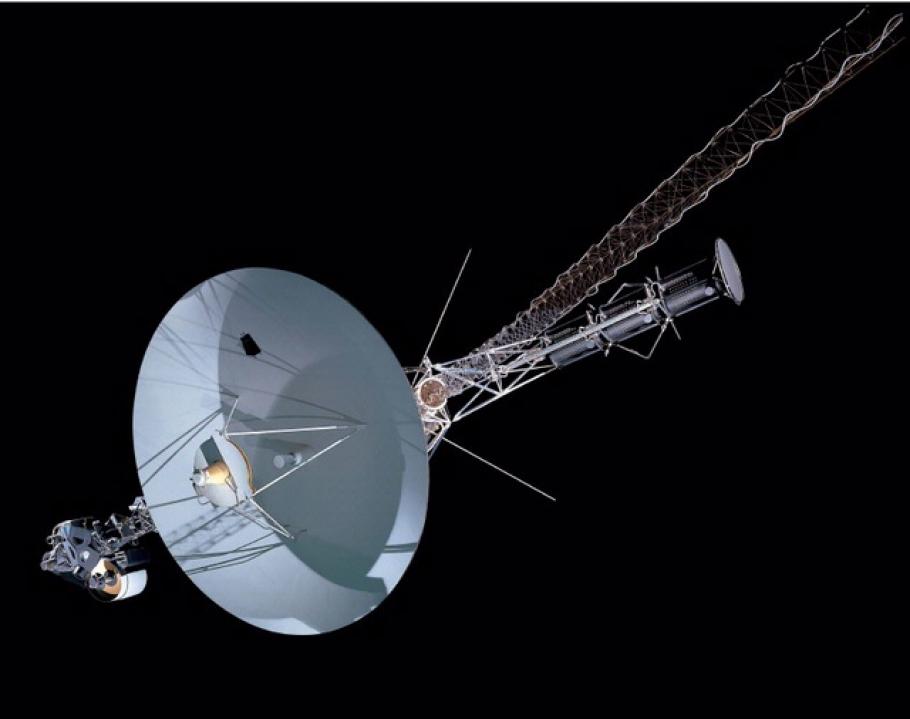
Five instruments continue to collect important measurements of magnetic fields, plasmas, and charged particles as both spacecraft explore different portions of the solar system beyond the orbits of the planets. Voyager 1 is now more than 118 astronomical units (one AU is equal to the average orbital distance of Earth from the Sun) distant from the sun, traveling at a speed (relative to the sun) of 17.1 kilometers per second (10.6 miles per second). Voyager 2 is now more than 96 AU from the sun, traveling at a speed of 15.5 kilometers per second (9.6 miles per second). Both spacecraft are moving considerably faster than Pioneers 10 and 11, two earlier spacecraft that became the first robotic visitors to fly past Jupiter and Saturn in the mid-70s.
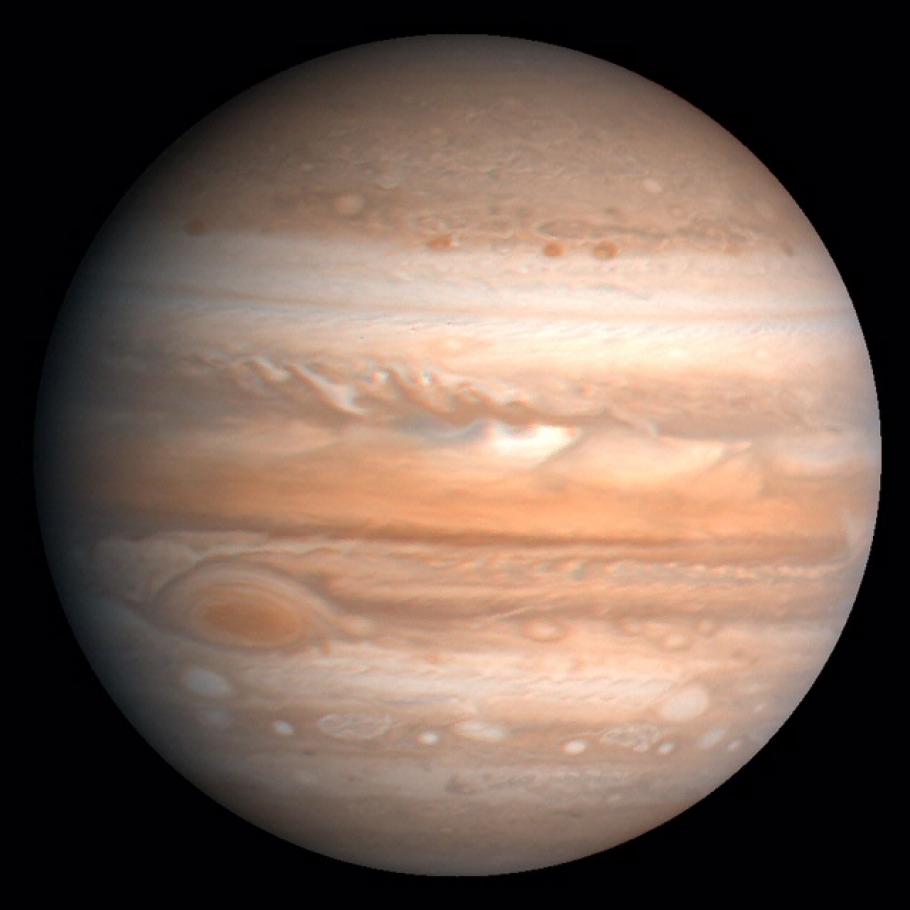
This processed color image of Jupiter was produced in 1990 by the U.S. Geological Survey from a Voyager image captured in 1979. The colors have been enhanced to bring out detail. Zones of light-colored, ascending clouds alternate with bands of dark, descending clouds. The clouds travel around the planet in alternating eastward and westward belts at speeds of up to 540 kilometers per hour. Tremendous storms as big as Earthly continents surge around the planet. The Great Red Spot (oval shape toward the lower-left) is an enormous anticyclonic storm that drifts along its belt, eventually circling the entire planet.
As seen in the night sky at Earth, Voyager 1 is within the confines of the constellation Ophiuchus, only slightly above the celestial equator; no telescope can see it, but radio contact is expected to be maintained for at least the next ten years. Voyager 2 is within the bounds of the constellation Telescopium (which somehow sounds quite appropriate) in the far southern night sky.
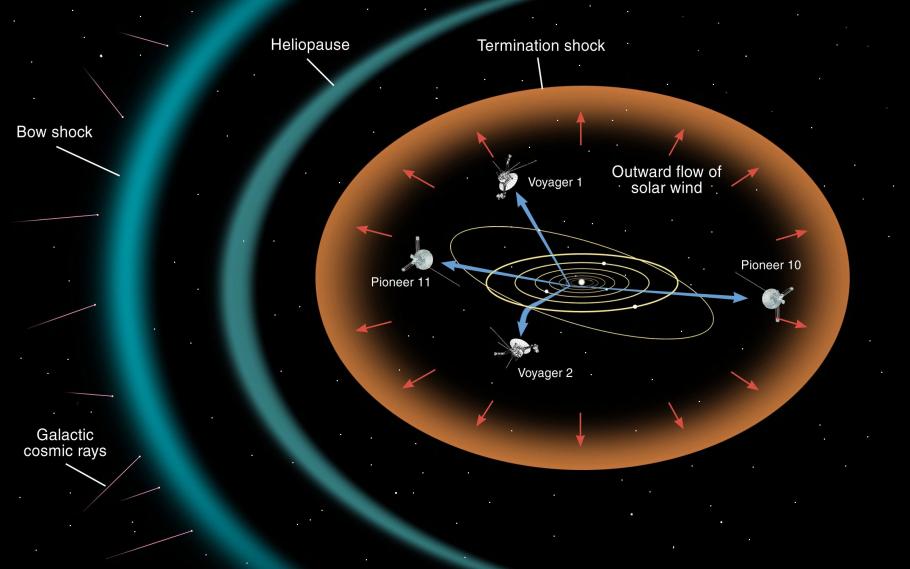
Both spacecraft have already passed something called the Termination Shock † (December 2004 for V1, August 2007 for V2), where the solar wind slows as it starts to interact with the particles and fields present between the stars. It is expected that both spacecraft will encounter the Heliopause, where the solar wind ceases as true interstellar space begins, from 10 to 20 years after crossing the Termination Shock. Theories exist for what should be present in interstellar space, but the Voyagers will become the first man-made objects to go beyond the influences of the Sun, hopefully returning the first measurements of what it is like out there. Each spacecraft is carrying a metal record with encoded sounds and sights from Earth, along with the needle needed to read the recordings, and simplified instructions for where the spacecraft came from, in case they are eventually discovered by intelligent extra-terrestrials.
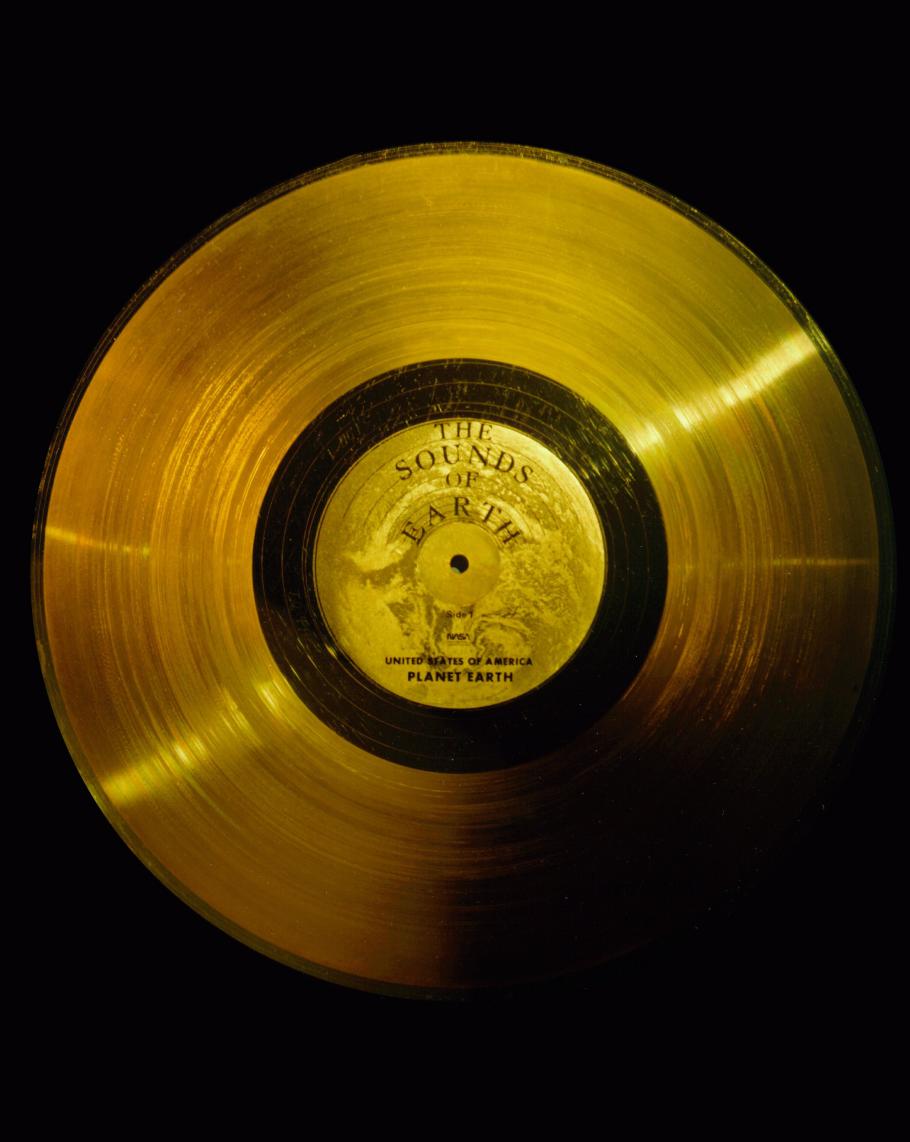
Keep track of the Voyager spacecraft on the official Voyager Interstellar Mission website or follow @NASAVoyager2 on Twitter. † The sun ejects a continuous stream of charged particles (electrons, protons, etc) that is collectively termed the solar wind. The particles are traveling extremely fast and are dense enough to form a very tenuous atmosphere; the heliosphere represents the volume of space where the effects of the solar wind dominate over those of particles in interstellar space. The solar wind particles are moving very much faster than the local speed of sound represented by their low volume density. When the particles begin to interact with interstellar particles and fields (the interaction can be either physically running into other particles or experiencing an electromagnetic force resulting from a charged particle moving within a magnetic field), then they start to slow down. The point at which they become subsonic (rather than their normal hypersonic speed) is the Termination Shock.
We rely on the generous support of donors, sponsors, members, and other benefactors to share the history and impact of aviation and spaceflight, educate the public, and inspire future generations. With your help, we can continue to preserve and safeguard the world’s most comprehensive collection of artifacts representing the great achievements of flight and space exploration.
- Get Involved
- Host an Event
Thank you. You have successfully signed up for our newsletter.
Error message, sorry, there was a problem. please ensure your details are valid and try again..
- Free Timed-Entry Passes Required
- Terms of Use
- Mobile Site
- Staff Directory
- Advertise with Ars
Filter by topic
- Biz & IT
- Gaming & Culture
Front page layout
Some hope —
Finally, engineers have a clue that could help them save voyager 1, a new signal from humanity's most distant spacecraft could be the key to restoring it..
Stephen Clark - Mar 15, 2024 11:23 pm UTC
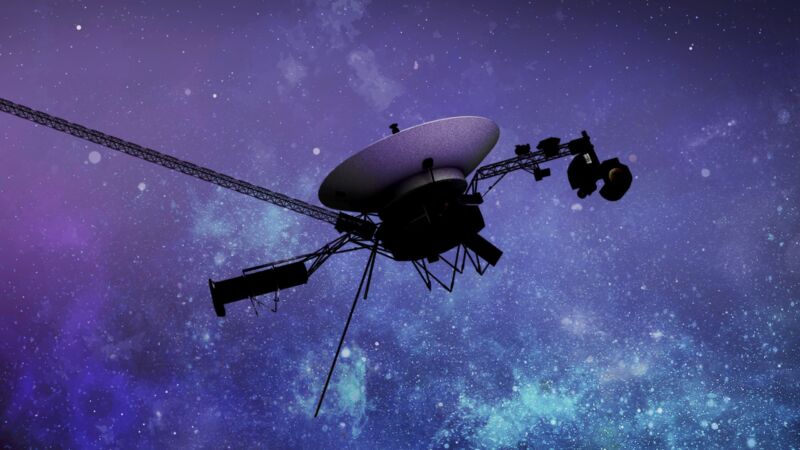
It's been four months since NASA's Voyager 1 spacecraft sent an intelligible signal back to Earth, and the problem has puzzled engineers tasked with supervising the probe exploring interstellar space.
But there's a renewed optimism among the Voyager ground team based at NASA's Jet Propulsion Laboratory in California. On March 1, engineers sent a command up to Voyager 1—more than 15 billion miles (24 billion kilometers) away from Earth—to "gently prompt" one of the spacecraft's computers to try different sequences in its software package. This was the latest step in NASA's long-distance troubleshooting to try to isolate the cause of the problem preventing Voyager 1 from transmitting coherent telemetry data.
Cracking the case
Officials suspect a piece of corrupted memory inside the Flight Data Subsystem (FDS), one of three main computers on the spacecraft, is the most likely culprit for the interruption in normal communication. Because Voyager 1 is so far away, it takes about 45 hours for engineers on the ground to know how the spacecraft reacted to their commands—the one-way light travel time is about 22.5 hours.
The FDS collects science and engineering data from the spacecraft's sensors, then combines the information into a single data package, which goes through a separate component called the Telemetry Modulation Unit to beam it back to Earth through Voyager's high-gain antenna.
Engineers are almost entirely certain the problem is in the FDS computer. The communications systems onboard Voyager 1 appear to be functioning normally, and the spacecraft is sending a steady radio tone back to Earth, but there's no usable data contained in the signal. This means engineers know Voyager 1 is alive, but they have no insight into what part of the FDS memory is causing the problem.
But Voyager 1 responded to the March 1 troubleshooting command with something different from what engineers have seen since this issue first appeared on November 14.
"The new signal was still not in the format used by Voyager 1 when the FDS is working properly, so the team wasn’t initially sure what to make of it," NASA said in an update Wednesday. "But an engineer with the agency’s Deep Space Network, which operates the radio antennas that communicate with both Voyagers and other spacecraft traveling to the Moon and beyond, was able to decode the new signal and found that it contains a readout of the entire FDS memory."
Now, engineers are meticulously comparing each bit of code from the FDS memory readout to the memory readout Voyager 1 sent back to Earth before the issue arose in November. This, they hope, will allow them to find the root of the problem. But it will probably take weeks or months for the Voyager team to take the next step. They don't want to cause more harm.
"Using that information to devise a potential solution and attempt to put it into action will take time," NASA said.
This is perhaps the most serious ailment the spacecraft has encountered since its launch in 1977. Voyager 1 flew by Jupiter and Saturn before getting a kick from Saturn's gravity to speed into the outer solar system. In 2012, Voyager 1 entered interstellar space when it crossed the heliopause, where the solar wind, the stream of particles emanating from the Sun, push against a so-called galactic wind, the particles that populate the void between the stars.
Engineers have kept Voyager 1 and its twin, Voyager 2, alive for more than 46 years , overcoming technical problems that have doomed other space missions. Both probes face waning power from their nuclear batteries, and there are concerns about their thrusters aging and fuel lines becoming clogged, among other things. But each time there is a problem, ground teams have come up with a trick to keep the Voyagers going, often referencing binders of fraying blueprints and engineering documents from the spacecraft's design and construction nearly 50 years ago.
Suzanne Dodd, NASA's project manager for Voyager 1 and its twin, Voyager 2, recently told Ars that engineers would need to pull off their "biggest miracle" to restore Voyager 1 to normal operations. Now, Voyager 1's voice from the sky has provided engineers with a clue that could help them realize this miracle.
reader comments
Channel ars technica.
March 14, 2024
10 min read
Voyager 1’s Immortal Interstellar Requiem
NASA is reaching across more than 15 billion miles to rescue its malfunctioning Voyager 1 probe—but this hallowed interstellar mission can’t live forever
By Nadia Drake
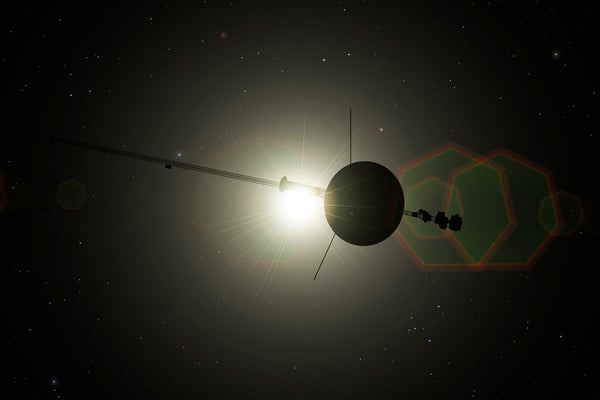
An artist's concept of NASA's Voyager 1, the space agency's venerable and farthest-flung interplanetary probe.
Mark Garlick/Science Photo Library
In the fall of last year, one of NASA’s most venerable spacecraft started beaming home nonsense. Its usual string of 1’s and 0’s—binary code that collectively told of its journey into the unknown—became suddenly unintelligible.
Some 15 billion miles from Earth, beyond the protective bubble blown by the sun and in interstellar space, Voyager 1 was in trouble.
“We’d gone from having a conversation with Voyager, with the 1’s and 0’s containing science data, to just a dial tone,” says Linda Spilker , Voyager project scientist at NASA’s Jet Propulsion Laboratory (JPL).

On supporting science journalism
If you're enjoying this article, consider supporting our award-winning journalism by subscribing . By purchasing a subscription you are helping to ensure the future of impactful stories about the discoveries and ideas shaping our world today.
Spilker joined JPL in 1977, the same year that NASA launched Voyager 1 and its twin, Voyager 2 , on what, in a way, was an endless odyssey: from Earth, to the outer solar system and ultimately to interstellar infinity . Today there are several billion people on Earth who have never taken a breath without the Voyagers in our sky, people who, like me, have only ever existed in a cosmos shared with these talkative twin spacecraft. But like people, spacecraft get old. They break down .
And all good things—and even great ones—must come to an end. After days, and weeks and then months of nothing but indecipherable binary babbling, Voyager 1’s earthbound stewards had to reckon with the idea that maybe, after more than 46 years, its time had at last run out.
The Voyager 1 team at JPL had traced the problem to the spacecraft’s Flight Data System, an onboard computer that parses and parcels engineering and science measurements for subsequent radio transmittal to Earth. One possibility was that a high-energy cosmic particle had struck Voyager 1 and caused a bit flip within the system’s memory — something that has happened more frequently as the craft navigates the hostile wilds of interstellar space. Normally, the team would simply ask the spacecraft for a memory readout, allowing its members to find and reset the errant bit.
“We’ve recovered from bit flips before. The problem this time is we don’t know where the bit flip is because we can’t see what the memory is,” says Suzanne Dodd , Voyager project manager at JPL, who, like Spilker, began her long career with work on the probes. “It’s the most serious issue we’ve had since I’ve been the project manager, and it’s scary because you lose communication with the spacecraft.”
Yesterday, the team announced a significant step in breaking through to Voyager 1. After months of stress and unsuccessful answers they have managed to decode at least a portion of the spacecraft’s gobbledygook, allowing them to (maybe) find a way to see what it has been trying to say.
“It’s an excellent development on Voyager,” says Joe Westlake , director of NASA’s heliophysics division, which oversees the mission.
In the time it will take you to read this story, Voyager 1 will have traversed approximately 10,000 miles of mostly empty space ; in the weeks it took me to report it, the probe traveled some 26 million miles. And since its communication first became garbled last November, the spacecraft has sailed another 10 light-minutes away from home. Voyager 1 and its twin are slipping away from us as surely as the passage of time itself. Sooner or later, these hallowed space-age icons will fall silent, becoming no more than distant memories.
And even among the space community, which of course loves all of its robotic explorers equally, the Voyagers are special. “They are incredibly important and much beloved spacecraft,” says Nicola Fox , NASA’s associate administrator for science. “Voyager 1 is a national treasure, along with Voyager 2 .”
As envisioned, the Voyager mission would exploit a once-in-175-year alignment of Jupiter, Saturn, Uranus and Neptune to slingshot through the solar system’s sparsely charted hinterlands. Legend has it that NASA’s administrator sold the project to President Richard Nixon by noting that the last time the planets were so favorably arranged, Thomas Jefferson was living in the White House. Outfitted with nuclear power sources, the Voyagers were built to last—in utter defiance of the adage that what must go up, must come down. Neither was ever intended to make planetfall again; instead they were bound for the stars. And now, nearly a half-century later, the pair have become the longest-lived and farthest-flung probes ever dispatched by humankind. (Voyager 1 is the front-runner, with its sibling trailing close behind.)
Spilker was straight out of college when she started working on the Voyagers, eager to see the outer solar system through their robotic eyes as they surfed the rare celestial alignment. “I had a telescope in third grade that I used to look at Jupiter and Saturn,” she says. “I wanted to get up really close and get a look at what these planets look like.”
Between 1979 and 1981, Voyager 1 and Voyager 2 zipped by the gas giants , returning stunning images of banded Jupiter and buttery Saturn and their bewildering collection of moons. Voyager 2 went on to scrutinize the ice giants: Uranus in 1986 and Neptune in 1989. These were the first and only times anyone had seen each of these bluish ringed worlds up close.
“They were small little pinpoints of light, and now you’re flying close,” Spilker says. “And you see the cliffs of Miranda”—a bizarre Uranian moon—“and Triton, with active geysers going off.” (Nobody had expected to see an active icy world in orbit around Neptune, and even now Voyager’s 35-year-old image is still the best we have of that strange little moon.)
When the Voyagers left the realm of the known planets, each followed a different path into darkness: Voyager 1 arced up and out of the plane of the solar system, and Voyager 2 looped downward. Spilker also followed her own path: she went to graduate school and earned her doctorate in planetary science using Voyager data—not knowing that several decades later, after leading NASA’s Cassini mission to Saturn, she’d again be part of the mission that started it all.
“The chance came to go back to Voyager,” she says. “And I said, ‘Of course. I’d love to go back.’”
In the interim, as the Voyagers sailed farther from their Earthly harbor, teams shut down many of the onboard instruments, including the cameras. But the pair kept studying the space that they alone were visiting. Their main job was now to characterize the heliosphere—the solar-system-encompassing, cosmic-ray-blocking bubble formed by our sun’s wind and magnetic field. They would document the alien mix of particles and fields that pervade near nothingness. And maybe, if they got lucky, the twins would each escape the protective solar caul entirely to be reborn as true interstellar wanderers.
In 2012 Voyager 1 transcended this boundary , known as the heliopause, where the sun’s influence wanes. Before that scientists could only guess at what lay beyond this barrier and could only model how it shielded Earth from the harshness of the void. Now Voyager 1 could tell us directly about the stuff between the stars. Voyager 2 followed in 2018 , and Fox—then the new chief of NASA’s heliophysics division—was in the midst of the action.
“You’re looking at the cosmic rays going up and the solar wind going down, and it was one of those ‘oh, my god, this is so exciting’ moments,” Fox recalls. “I think of the Voyagers as one mission,” she says. “We’re putting all the data together, but they’re the ones that are out there. They’re the brave spacecraft that have left the protective bubble of the heliosphere and are out exploring interstellar space. It’s hard not to be excited by them.”
This wasn’t the first time Voyager 1 had started speaking an unintelligible language. In 2022, when the probe suffered an earlier bout of garbled telemetry, JPL engineer Bob Rasmussen was shaken out of retirement. The lab wanted to know if Rasmussen, who’d joined the spacecraft’s systems engineering team in 1975, was willing to have a think about the situation.
“I’d been happily retired for a bit more than a year at that point, with plenty else to keep me busy,” Rasmussen says. “But I like solving puzzles, and this was a tough one that I just couldn’t pass up. Cracking it took a few months, but the puzzle stream hasn’t slowed since then.”
Afterward, he stayed on-call. So last November, when Voyager 1 again started transmitting nonsense, Rasmussen was ready for more problem-solving. He was joined by a hand-picked team of specialists, and together they dove into the details for getting the ailing spacecraft back in action.
The problems were at least three layers deep. First, it takes a long time to communicate with Voyager 1. Traveling at the speed of light, the radio signals used to command the spacecraft take 22.5 hours to travel 15 billion miles—and 22.5 hours to come back. Second, the Voyagers are not exactly modern technology.
“Most things don’t last 46 years. Your clock radio and toaster aren’t going to last 46 years,” says Dodd, who started on the Voyager project straight out of school, then worked on other missions and is now back on this one.
Plus, many of the people who built and developed the spacecraft in the 1970s aren’t around to explain the rationale behind the designs.
And third, unluckily enough, whatever had mangled the spacecraft had managed to take out Voyager 1’s ability to send meaningful communications. The team was in the dark, trying to find the invisible source of an error. (Imagine trying to revive a stalled desktop computer with a frozen screen: you can’t see your cursor, and your clicks risk causing more problems—except in this case each input carries a multiday lag and could damage a precious, misbehaving artifact that is more than 15 billion miles away.) Perhaps the most vexing part was the team’s knowledge that Voyager 1 was otherwise intact and functioning as it should be.
“It’s still doing what it’s supposed to be doing,” Westlake says. “It just can’t quite figure out how to send the correct message home.”
Rasmussen and his colleagues set out to understand the spacecraft in as much detail as possible. That meant poring over the original design schematics, now yellowed and pinned to various walls—an effort that resembled “a bit of an archaeology dig,” Dodd says—and studying how past teams had addressed anomalies. That was tricky, Dodd says, because even though the team members could figure out how engineers solved a problem, they couldn’t necessarily discern the rationale behind various solutions. They’d send commands to Voyager 1 about once a week—usually on Fridays—and by Sunday, they’d hear back from the spacecraft.
“There’s suspense after each cautious move, hope with each piece that falls into place, disappointment if our hunches are wrong,” Rasmussen says.
Progress was slow. And as time crept on, the team grew more concerned. But no one was giving up, at any level of leadership.
“I will rely on the Voyager team to say, ‘Hey, Nicky, we’ve done everything , ’” Fox says. “We wouldn’t make any decisions until we knew that every single thing had been tried and tried again because we really do want to get Voyager 1 back talking to us.”
And then, in early March, something changed. In response to a command, instead of beaming back absolute gibberish, the spacecraft sent a string of numbers that looked more familiar. It proved to be a Rosetta stone moment. Soon an unnamed engineer at NASA’s Deep Space Network—the globe-girdling array of radio dishes that relays information from Earth to spacecraft—had learned how to speak Voyager 1’s jumbled language.
After translating that vaguely familiar portion of the spacecraft’s transmission, the team could see that it contained a readout of the flight data system’s memory. Now they face new questions: Can they find and correct the source of the mutated code? Can they learn whether the spacecraft is sending useful science data? Can they restore Voyager 1’s lexicon to its original state—or will they need to continue speaking in the probe’s new postheliopause patois? “The hope is that we’ll get good science data back,” Westlake says. “Thinking about something that’s been a constant throughout my entire career going away is really tough to think about.”
But either by glitch or time’s slow decay of radioactive power sources, the Voyagers will, of course, eventually fade away. Each year they lose four watts of power, and they grow ever colder. “Whether it’s this particular anomaly that gets us or one downstream, or the spacecraft gets old enough and cold enough —one day you’ll go to look for it and it has just stopped working,” Spilker says.
Like silent ambassadors or wordless emissaries, the Voyagers will keep sailing outward, still carrying us with them into the stars—“sort of like a message a bottle,” Spilker says.
Besides their science payloads, a fraction of each spacecraft’s mass was devoted to casting a cosmic message into the interstellar ocean from a lonely island called Earth. Mounted to each probe is a golden record etched with grooves encoding a selection of sights and sounds from our small corner of space and time. An accompanying stylus is positioned to play the record from the beginning, alongside a pictographic and arithmetic instruction manual.
The records are gold because gold is stable for eons, and they’re records because that was the best way to store a lot of information in the 1970s. Should they ever be recovered and decoded, the message will tell the stories of we humans—at least as envisioned (and in some cases performed) by a small group of folks that included my parents ( the late astrophysicist Frank Drake and his surviving spouse Amahl Shakhashiri Drake), astronomer Carl Sagan, documentary producer Ann Druyan and science writer Timothy Ferris. Those stories are imperfect. They’re filled with lopsided optimism and scrubbed of references to war, famine, poverty and most any other Earthly failing—a deliberate decision to hide the defects of our broken world. I know this because my dad, the record’s technical director and a pioneer in the scientific quest to find cosmic civilizations, told me about the hard choices he’d made in selecting the photographs. And I know it because my mom, who recorded the message’s Arabic greeting (“Greetings to our friends in the stars. We wish that we will meet you someday”), helped, too.
For me, as the Voyagers travel through space , they’re not only helping us understand the cosmic context in which we exist; they’re also bearing a memento of my parents into the stars. These spacecraft—and their gleaming paean to Earth—will survive for billions of years. Long after our world, our sun and everything we hold dear becomes unrecognizable, the Voyagers will remain, resolutely speeding ever farther from a home that no longer exists and containing artifacts of a civilization that once was.
That’s why, over nearly half a century, the Voyagers and their interstellar tidings have come to be bigger than the already audacious mission they were designed to accomplish. Their reach is broader. And their inevitable silence will be profound.
“The thought that they’re out there on their own and you can no longer communicate with them—it’s traumatic,” Fox says. “It’s sad. It’s really sad.”
The most distant spacecraft in the solar system — Where are they now?
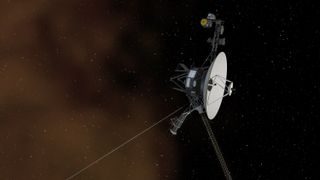
Humans have been flinging things into deep space for 50 years now, since the 1972 launch of Pioneer 10. We now have five spacecraft that have either reached the edges of our solar system or are fast approaching it: Pioneer 10, Pioneer 11, Voyager 1, Voyager 2 and New Horizons.
Most of these probes have defied their expected deaths and are still operating long beyond their original mission plans. These spacecraft were originally planned to explore our neighboring planets, but now they're blazing a trail out of the solar system , providing astronomers with unique vantage points in space — and they've been up to a lot in 2022.
Voyagers 1 and 2
The Voyager missions celebrated a very special anniversary this year: 45 years of operations . From close fly-bys of the outer planets to exploring humans' furthest reach in space, these two spacecraft have contributed immensely to astronomers' understanding of the solar system.
Related : Voyager: 15 incredible images of our solar system captured by the twin probes (gallery)
Their main project now is exploring where the sun 's influence ends, and other stars' influences begin. Voyager 1 crossed the heliopause, the boundary where the sun's flow of particles ceases to be the most important influence, in 2012 with Voyager 2 following close after, in 2018.
"Voyager 1 has now been in interstellar space for a decade…and it's still going, still going strong," Linda Spilker, Voyager project scientist and a planetary scientist at NASA's Jet Propulsion Laboratory (JPL) in California, told Space.com.
The mission team hit one major hiccup this year, when the spacecraft began sending home garbled information about its location. The engineers found the cause — the spacecraft was using a bad piece of computer hardware when it shouldn't have — and restored operations.
Get the Space.com Newsletter
Breaking space news, the latest updates on rocket launches, skywatching events and more!
These kinds of incidents are to be expected with an aging spacecraft, though. The team is also actively managing the power supply onboard each spacecraft, which is dwindling each year as the probes' radioactive generators grow increasingly inefficient. This year, mission personnel turned off heaters keeping a number of scientific instruments on board warm in the harsh, cold environment of space — and, much to everyone's surprise, those instruments are still working perfectly well.
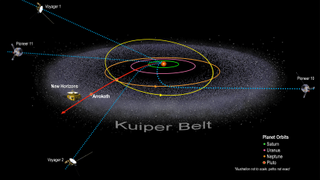
The cameras may have been turned off decades ago, but the spacecrafts' other instruments are collecting data on the plasma and magnetic fields from the sun at a great distance away from the star itself. Because particles of the solar wind — the constant stream of charged particles flowing off the sun — take time to travel such a long way, distant observations allow scientists to see how changes from the sun propagate throughout our cosmic neighborhood.
The edges of the solar system have been full of surprises, too. It would make sense that plasma from the sun becomes more sparse and spread out as you move away from the center of the solar system, but in fact, the Voyagers have encountered much denser plasma after crossing the heliopause. Astronomers are still puzzled about that one.
"It's just so amazing that even after all this time we continue to see the sun's influence in interstellar space," Spilker said. "I'm looking forward to Voyager continuing to operate, perhaps reaching the 50th anniversary."
Pioneers 10 and 11
The Pioneer spacecraft hold a special place in space history because of their role as, you guessed it, pioneers. Unfortunately, these milestone 50-year-old spacecraft are non-functional — Pioneer 10 lost communications back in 2003, and Pioneer 11 has been silent since its last contact in 1995.
But both these spacecraft are marks of humanity's presence in the solar system, and they are still continuing on their journeys, even if we're not sending them commands or firing their rockets anymore. Once a spacecraft is set on a trajectory out of the solar system, according to the laws of physics, it won't stop unless something changes its course.
New Horizons
New Horizons is by far the youngest sibling of these groundbreaking missions, having just launched in 2006 . After completing its famous flyby of dwarf planet Pluto in 2015 , this probe has been zooming out of the solar system at record speed, set to reach the heliopause around 2040.
Not only has it completed its primary mission, but it successfully completed a flyby of the smaller Kuiper Belt object, Arrokoth , in 2019 as its first mission extension. Earlier this year, the spacecraft was put into hibernation mode because an extended mission hadn't yet been approved. But now, the team is excitedly moving into New Horizons' 2nd Kuiper Belt Extended Mission, or KEM2 for short. KEM2 began on Oct. 1 , although the spacecraft will hibernate until March 1, 2023.
In the meantime, the mission team is preparing for exciting new observations. With cutting-edge instruments — far more advanced than what the Voyagers carried in the 1970s — the team is prepared to use New Horizons as a powerhouse observatory in the distant solar system, providing a viewpoint we can't achieve here on Earth .
Bonnie Burrati, planetary scientist at JPL and member of the New Horizons team, is particularly looking forward to new views of Kuiper Belt objects (KBOs), the chunks of ice and rock beyond Neptune . New Horizons' unique position in the outer solar system provides new angles of looking at these KBOs, she said. Different views can tell astronomers about how rough the objects' surfaces are, among other things, based on how light scatters and creates shadows on them.
Another planetary scientist on the team from Southwest Research Institute in Colorado, Leslie Young, wants to use the spacecraft for a new look at something closer to home: the ice giants, Uranus and Neptune. New Horizons’ unique viewpoint provides scientists with information about how light scatters through the planets’ atmospheres—information we can’t get from here on Earth, since we can’t see Uranus and Neptune from that angle. Planetary scientists are eager for more information about these planets, especially as NASA begins planning for a new mission to visit Uranus.
— The icy 'space snowman' Arrokoth in deep space just got names for its best features — Pale Blue Dot at 30: Voyager 1's iconic photo of Earth from space reveals our place in the universe — Destination Pluto: NASA's New Horizons mission in pictures
When the spacecraft wakes from hibernation, it will be past the so-called "Kuiper cliff," where scientists currently think there are far fewer large KBOs. "When we look at other star systems, we see debris disks extending to much larger distances from their host stars," Bryan Holler, an astronomer at Baltimore's Space Telescope Science Institute, told Space.com. "If ET were to look at our solar system, would they see the same thing?"
This next extended mission will even venture beyond New Horizons' original domain of planetary science. Now, the spacecraft will provide better-than-ever measurements of the background of light and cosmic rays in space, trace the distributions of dust throughout our solar system, and obtain crucial information on the sun's influence, complimentary to the Voyagers. Since the three functional far out spacecraft are heading in separate directions, they allow astronomers to map out irregularities in the solar system's structure.
Luckily for New Horizons, signs indicate that the spacecraft will have enough power to last through the 2040s and possibly beyond — each year, moving 300 million miles (480 million kilometers) farther into uncharted territory.
Follow the author at @ briles_34 on Twitter. Follow us on Twitter @ Spacedotcom and on Facebook .
Join our Space Forums to keep talking space on the latest missions, night sky and more! And if you have a news tip, correction or comment, let us know at: [email protected].

Briley Lewis (she/her) is a freelance science writer and Ph.D. Candidate/NSF Fellow at the University of California, Los Angeles studying Astronomy & Astrophysics. Follow her on Twitter @briles_34 or visit her website www.briley-lewis.com .
NASA gets $25.4 billion in White House's 2025 budget request
'Interstellar meteor' vibrations actually caused by a truck, study suggests
Total solar eclipse 2024: Live updates
- bolide I wonder if the JWST could see any of these satellites, if it aimed in their direction. Reply
bolide said: I wonder if the JWST could see any of these satellites, if it aimed in their direction.
- View All 2 Comments
Most Popular
By Mike Wall April 07, 2024
By Jeff Spry April 07, 2024
By Sharmila Kuthunur April 07, 2024
By Robert Lea April 07, 2024
By Tariq Malik April 06, 2024
By Space.com Staff April 06, 2024
By Joe Rao April 06, 2024
By Josh Dinner April 06, 2024
By Mike Wall April 06, 2024
- 2 Total solar eclipse 2024 thrills millions across North America (video, photos)
- 3 Total solar eclipse 2024 has begun and here are the first views!
- 4 Total solar eclipse 2024: Pictures from around the web
- 5 In Indiana, the best spot to see the 2024 solar eclipse is wherever you are
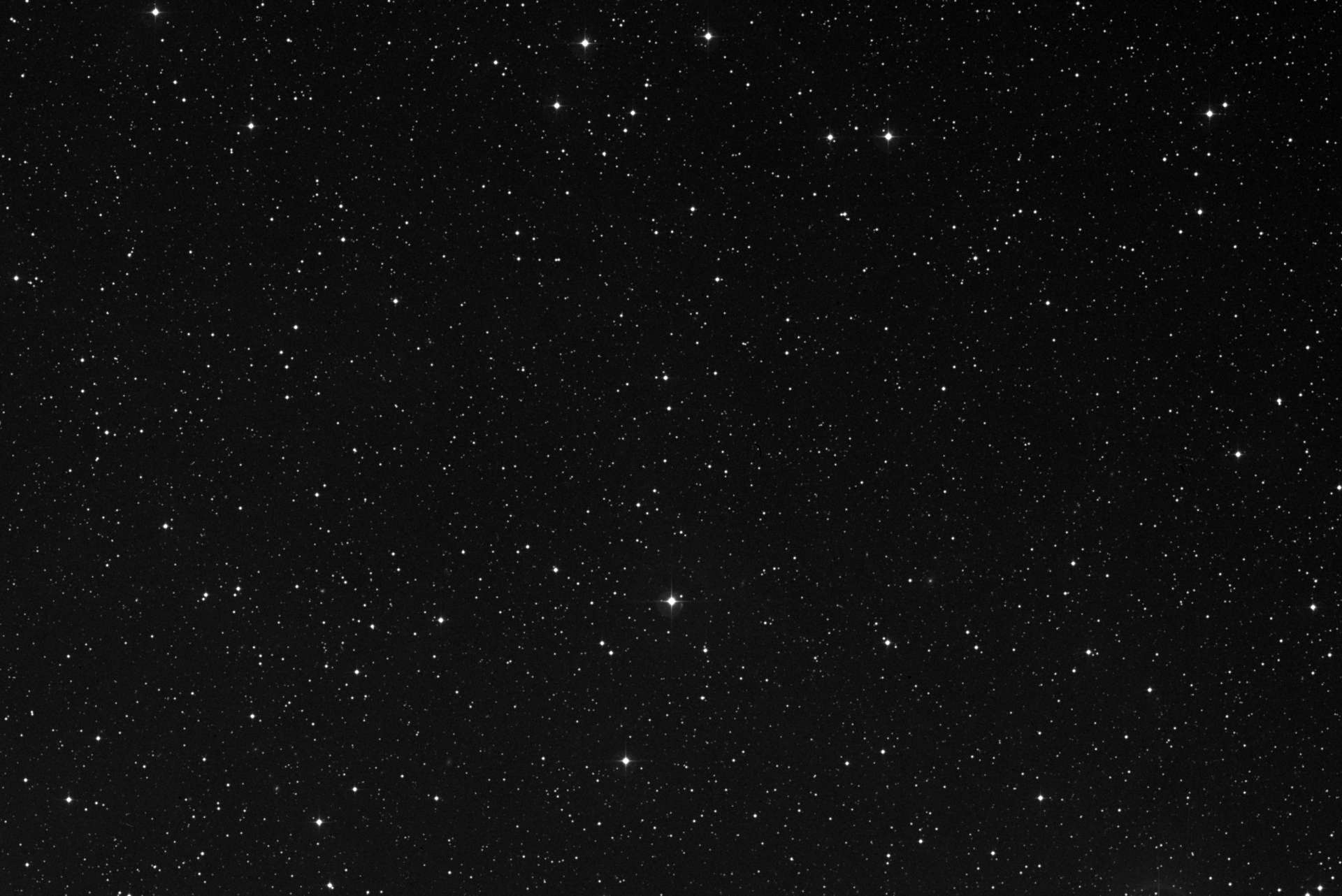
- Object Information
- Planetarium

Voyager 1 live position and data
This page shows Voyager 1 location and other relevant astronomical data in real time. The celestial coordinates, magnitude, distances and speed are updated in real time and are computed using high quality data sets provided by the JPL Horizons ephemeris service (see acknowledgements for details). The sky map shown in the background represents a rectangular portion of the sky 60x40 arcminutes wide. By comparison the diameter of the full Moon is about 30 arcmins, so the full horizontal extent of the map is approximately 2 full Moons wide. Depending on the device you are using, the map can be dragged horizondally or vertically using the mouse or touchscreen. The deep sky image in the background is provided by the Digitized Sky Survey ( acknowledgements ).
Current close conjunctions
List of bright objects (stars brighter than magnitude 9.0 and galaxies brighter than magmitude 14.0) close to Voyager 1 (less than 1.5 degrees):
Additional resources
- 15 Days Ephemerides
- Interactive Sky Map (Planetarium)
- Rise & Set Times
- Distance from Earth
Astronomy databases
- The Digitized Sky Survey, a photographic survey of the whole sky created using images from different telescopes, including the Oschin Schmidt Telescope on Palomar Mountain
- The Hipparcos Star Catalogue, containing more than 100.000 bright stars
- The PGC 2003 Catalogue, containing information about 1 million galaxies
- The GSC 2.3 Catalogue, containing information about more than 2 billion stars and galaxies
NASA engineers discover why Voyager 1 is sending a stream of gibberish from outside our solar system
Voyager 1 has been sending a stream of garbled nonsense since November. Now NASA engineers have identified the fault and found a potential workaround.
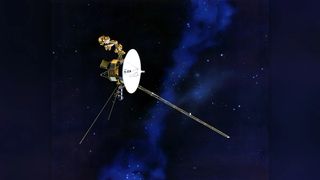
For the past five months, the Voyager 1 spacecraft has been sending a steady stream of unreadable gibberish back to Earth. Now, NASA engineers finally know why.
The 46-year-old spacecraft sends regular radio signals as it drifts further from our solar system . But in November 2023, the signals suddenly became garbled, meaning scientists were unable to read any of its data, and they were left mystified about the fault's origins.
In March, NASA engineers sent a command prompt, or "poke," to the craft to get a readout from its flight data subsystem (FDS) — which packages Voyager 1's science and engineering data before beaming it back to Earth.
After decoding the spacecraft's response, the engineers have found the source of the problem: The FDS's memory has been corrupted.
Related: NASA's Voyager 1 sends readable message to Earth after 4 nail-biting months of gibberish
"The team suspects that a single chip responsible for storing part of the affected portion of the FDS memory isn't working," NASA said in a blog post Wednesday (March 13) . "Engineers can't determine with certainty what caused the issue. Two possibilities are that the chip could have been hit by an energetic particle from space or that it simply may have worn out after 46 years."
— NASA hears 'heartbeat' signal from Voyager 2 probe a week after losing contact
— Historic space photo of the week: Voyager 2 spies a storm on Saturn 42 years ago
— NASA reestablishes full contact with Voyager 2 probe after nail-biting 2-week blackout
Although it may take several months, the engineers say they can find a workaround to run the FDS without the fried chip — restoring the spacecraft's messaging output and enabling it to continue to send readable information from outside our solar system.
Sign up for the Live Science daily newsletter now
Get the world’s most fascinating discoveries delivered straight to your inbox.
Launched in 1977, Voyager 1 zipped past Saturn and Jupiter in 1979 and 1980 before flying out into interstellar space in 2012. It is now recording the conditions outside of the sun's protective magnetic field , or heliosphere, which blankets our solar system.
Voyager 1 is currently more than 15 billion miles (24 billion kilometers) from Earth, and it takes 22.5 hours for any radio signal to travel from the craft to our planet.

Ben Turner is a U.K. based staff writer at Live Science. He covers physics and astronomy, among other topics like tech and climate change. He graduated from University College London with a degree in particle physics before training as a journalist. When he's not writing, Ben enjoys reading literature, playing the guitar and embarrassing himself with chess.
The moon is getting its own time zone, White House memo to NASA reveals
Chinese space junk falls to Earth over Southern California, creating spectacular fireball
Pregnancy may speed up 'biological aging,' study suggests
- TorbjornLarsson Bon voyage, Voyager! Reply
- Jay McHue What if aliens are doing it to try to communicate with us? 🤪 Reply
Jay McHue said: What if aliens are doing it to try to communicate with us? 🤪
admin said: Voyager 1 has been sending a stream of garbled nonsense since November. Now NASA engineers have identified the fault and found a potential workaround. NASA engineers discover why Voyager 1 is sending a stream of gibberish from outside our solar system : Read more
sourloaf said: What does FSB mean?
Rusty Lugnuts said: Where are you seeing "FSB"? The closest thing I can see in the article is "FDS". In modern computers, FSB would most likely refer to the Fr0nt S1ide Bu5, though I have no idea if a system as old as Voyagers, let alone engineered so specifically, would have an FSB. (apparently I can't spell out "Fr0nt S1ide Bu5" or my post gets flagged as spam or inappropriate??)
- SkidWard Just cut the % of ram needed... skip the bad sectors Reply
- kloudykat FDS = fl1ght da1a sub5ystem5 Reply
- 5ft24dave This is pretty old news, like 6 months old. Are you guys just now discovering this? Reply
Commodore Browncoat said: That's about as sane a theory as many of the others that have become ridiculously popular in the past several years, so sure - why not? What reply do you think we should send?
- View All 10 Comments
Most Popular
By Sascha Pare April 08, 2024
By Andre Luiz Saraiva De Oliveira, Andrew Dzurak April 08, 2024
By Harry Baker April 08, 2024
By Kristina Killgrove April 08, 2024
By Tom Metcalfe April 07, 2024
By Nicoletta Lanese April 07, 2024
By Abha Jain April 07, 2024
By Jennifer Nalewicki April 07, 2024
By Jamie Carter April 06, 2024
By Melissa Hobson April 06, 2024
By Jennifer Nalewicki April 06, 2024
- 2 Watch live! The total solar eclipse has begun over North America.
- 3 April 8 solar eclipse: What time does totality start in every state?
- 4 Where to get solar eclipse glasses last minute
- 5 How and where to watch the April 8 solar eclipse online for free
- 2 Giant 'toe biter' water bugs discovered in Cyprus for the 1st time
- 3 When is the next total solar eclipse after 2024 in North America?
- 4 Watch live! The total solar eclipse has begun over North America.
- 5 8,200-year-old campsite of 'Paleo-Archaic' peoples discovered on US Air Force base in New Mexico

NASA's Voyager 1 probe has been glitching for months and we finally know why
An artist’s concept of the Voyager 1 spacecraft in interstellar space.
After months of sending unusable data to mission control, there’s finally hope for the Voyager 1 spacecraft. NASA engineers pinpointed the cause behind the mission’s odd anomaly, and think they can help the interstellar probe make sense again.
Engineers at NASA’s Jet Propulsion Laboratory believe the Voyager 1 spacecraft has been sending nonsensical data due to corrupted memory hardware in the spacecraft’s flight data system (FDS). “The team suspects that a single chip responsible for storing part of the affected portion of the FDS memory isn’t working,” NASA wrote in an update.
FDS collects data from Voyager’s science instruments, as well as engineering data about the health of the spacecraft, and combines them into a single package that’s transmitted to Earth through one of the probe’s subsystems, the telemetry modulation unit (TMU), in binary code.
FDS and TMU have been having trouble communicating with one another. As a result, TMU has been sending data to mission control in a repeating pattern of ones and zeroes. NASA’s engineers aren’t quite sure what corrupted the FDS memory hardware; they think that either the chip was hit by an energetic particle from space or that it’s just worn out after operating for 46 years.
Voyager 1 launched in 1977, less than a month after its twin probe, Voyager 2, began its own journey to space. The probe ventured into interstellar space in August 2012, becoming the first spacecraft to leave the heliosphere.
The problem first began in May 2022, when the probe suddenly started sending nonsensical attitude articulation and control (AACS) data . Engineers resolved the issue by sending the telemetry data through one of the spacecraft’s other computers. In December 2023, Voyager 1 started speaking gibberish again .
On March 1, the team sent a “poke” to the spacecraft’s data system, a command that gently prompts FDS to try different sequences in its software package in an effort to pinpoint the corrupted section. Two days later, Voyager 1 sent a signal that contained a readout of the entire FDS memory , which helped the team pinpoint the source of the glitch by comparing this memory readout with a previous one to look for discrepancies in the code.
“Using the readout, the team has confirmed that about 3% of the FDS memory has been corrupted, preventing the computer from carrying out normal operations,” NASA wrote in its update.
The engineers are hoping to resolve the issue by finding a way for FDS to operate normally without the corrupted memory hardware, enabling Voyager 1 to begin transmitting data about the cosmos and continue its journey through deep space.
A version of this article originally appeared on Gizmodo .
For the latest news, Facebook , Twitter and Instagram .
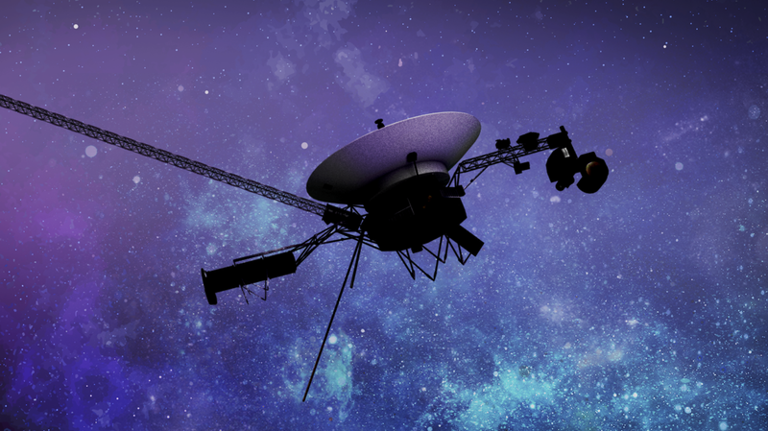
More From Forbes
Nasa discovers source of voyager 1 glitch in interstellar space.
- Share to Facebook
- Share to Twitter
- Share to Linkedin
A NASA image of one of the Voyager space probes. Voyager 1 and its identical sister craft Voyager 2 ... [+] were launched in 1977 to study the outer Solar System and eventually interstellar space. (Photo by NASA/Hulton Archive/Getty Images)
NASA’s pioneering Voyager 1 spacecraft has a memory problem. The space agency has been troubleshooting the elderly machine since it began sending back gibberish communications in November. NASA hasn’t fixed Voyager 1 yet, but engineers now know what’s vexing the spacecraft.
The glitch paused Voyager 1’s science work and kicked off a long-distance diagnosis process. The team traced the issue to the flight data subsystem, a computer that talks to the spacecraft’s telemetry modulation unit to send science and engineering data to Earth. The data came back unintelligible. The culprit appears to be a single chip that’s part of the FDS.
The breakthrough came thanks to a “poke” NASA sent in March that prompted Voyager 1 to send back a readout of its FDS memory. “Using the readout, the team has confirmed that about 3% of the FDS memory has been corrupted, preventing the computer from carrying out normal operations,” NASA said in a statement on April 4.
Voyager 1’s position so far away from home creates a lot of challenges when it comes to fixing problems. NASA talks to the spacecraft over a distance of over 15 billion miles. It takes 22.5 hours for a radio signal to reach Voyager 1 and it takes an equally long time to receive a response. It’s troubleshooting in slow motion. It also means figuring out the exact cause of the glitch is mostly educated guesswork. It could be damage or it could be a matter of age. “Engineers can’t determine with certainty what caused the issue,” said NASA. “Two possibilities are that the chip could have been hit by an energetic particle from space or that it simply may have worn out after 46 years.”
There’s reason for optimism, though Voyager 1 won’t make a quick recovery. “Although it may take weeks or months, engineers are optimistic they can find a way for the FDS to operate normally without the unusable memory hardware, which would enable Voyager 1 to begin returning science and engineering data again,” NASA said.
Best High-Yield Savings Accounts Of 2024
Best 5% interest savings accounts of 2024.
Voyager 1 has made an unprecedented journey across space. It launched in 1977 on an initial mission to study our solar system and visit Jupiter and Saturn. That was just the beginning. The resilient spacecraft kept on going and eventually entered interstellar space in 2012. It was the first human-made object to venture into the unexplored territory outside our solar system. Voyager 1’s twin Voyager 2 crossed over into interstellar space in 2018.
NASA turned off some of Voyager 1’s science instruments as the spacecraft aged, but the probe has still been returning valuable data on interstellar space. If a fix works, Voyager 1 will get back into the swing of science and write yet another chapter in an epic story of exploration.

- Editorial Standards
- Reprints & Permissions

- The Contents
- The Making of
- Where Are They Now
- Frequently Asked Questions
- Q & A with Ed Stone
golden record
Where are they now.
- frequently asked questions
- Q&A with Ed Stone
News | September 2, 1997
Two voyager spacecraft still going strong after 20 years.
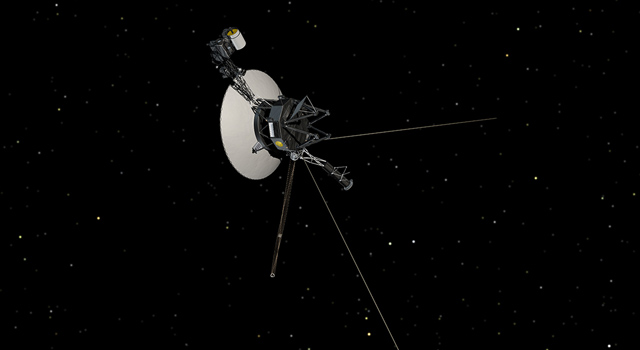
Twenty years after their launch and long after their planetary reconnaissance flybys were completed, both Voyager spacecraft are now gaining on another milestone -- crossing that invisible boundary that separates our solar system from interstellar space, the heliopause.
Since 1989, when Voyager 2 encountered Neptune, both spacecraft have been studying the environment of space in the outer solar system. Science instruments on both spacecraft are sensing signals that scientists believe are coming from the heliopause -- the outer most edge of the Sun's magnetic field that the spacecraft must pass through before they reach interstellar space.
"During their first two decades the Voyager spacecraft have had an unequaled journey of discovery. Today, even though Voyager 1 is now more than twice as far from the Sun as Neptune, their journey is only half over and more unique opportunities for discovery await the spacecraft as they head toward interstellar space," said Dr. Edward Stone, Voyager project scientist and director of NASA's Jet Propulsion Laboratory, Pasadena, CA. "The Voyagers owe their ability to operate at such great distances from the Sun to their nuclear electric power sources, which provide the electrical power they need to function."
The Sun emits a steady flow of electrically charged particles called the solar wind. As the solar wind expands supersonically into space, it creates a magnetized bubble around the Sun, called the heliosphere. Eventually, the solar wind encounters the electrically charged particles and magnetic field in the interstellar gas. The boundary created between the solar wind and interstellar gas is the heliopause. Before the spacecraft reach the heliopause, they will pass through the termination shock -- the zone in which the solar wind abruptly slows down from supersonic to subsonic speed.
Reaching the termination shock and heliopause will be major milestones for the spacecraft because no one has been there before and the Voyagers will gather the first direct evidence of their structure. Encountering the termination shock and heliopause has been a long-sought goal for many space physicists, and exactly where these two boundaries are located and what they are like still remains a mystery.
"Based on current data from the Voyager cosmic ray subsystem, we are predicting the termination shock to be in the range of 62 to 90 astronomical units (AU) from the Sun. Most 'consensus' estimates are currently converging on about 85 AU. Voyager 1 is currently at about 67 AU and moving outwards at 3.5 AU per year, so I would expect crossing the termination shock sometime before the end of 2003," said Dr. Alan Cummings, a co- investigator on the cosmic ray subsystem at the California Institute of Technology.
"Based on a radio emission event detected by the Voyager 1 and 2 plasma wave instruments in 1992, we estimate that the heliopause is located at110 to 160 AU from the Sun," said Dr. Donald A. Gurnett, principal investigator on the plasma wave subsystem at the University of Iowa. (One AU is equal to 150 million kilometers, or 93 million miles, or the distance from the Earth to the Sun.)
"The low-energy charged particle instruments on the two spacecraft continue to detect ions and electrons accelerated at the Sun and at huge shock waves, tens of AU in radius, that are driven outward through the solar wind. During the past five years, we have observed marked variations in this ion population, but have yet to see clear evidence of the termination shock. We should always keep in mind that our theories may be incomplete and the shock may be a lot farther out than we think," said Dr. Stamatios M. Krimigis, principal investigator for the low energy charged particle subsystem at The Johns Hopkins University Applied Physics Laboratory.
Voyager 2 was launched first on Aug. 20, 1977 and Voyager 1 was launched a few weeks later on a faster trajectory on Sept. 5. Initially both spacecraft were only supposed to explore two planets -- Jupiter and Saturn. But the incredible success of those two first encounters and the good health of the spacecraft prompted NASA to extend Voyager 2's mission on to Uranus and Neptune. As the spacecraft flew across the solar system, remote-control reprogramming has given the Voyagers greater capabilities than they possessed when they left the Earth.
There are four other science instruments that are still functioning and collecting data as part of the Voyager Interstellar Mission. The plasma subsystem measures the protons in the solar wind. "Our instrument has recently observed a slow, year-long increase in the speed of the solar wind which peaked in late 1996, and we are now observing a slow decrease in solar wind velocity," said Dr. John Richardson, of the Massachusetts Institute of Technology, principal investigator on the plasma subsystem. "We think the velocity peak coincided with the recent solar minimum. As we approach the solar maximum in 2000 the solar wind pressure should decrease, which will result in the termination shock and heliopause moving inward towards the Voyager spacecraft."
The magnetometer on board the Voyagers measures the magnetic fields that are carried out into interplanetary space by the solar wind. The Voyagers are currently measuring the weakest interplanetary magnetic fields ever detected and those magnetic fields being measured are responsive to charged particles that cannot be detected directly by any other instruments on the spacecraft, according to Dr. Norman Ness, principal investigator on the magnetometer subsystem at the Bartol Research Institute, University of Delaware.
Other science instruments still collecting data include the planetary radio astronomy subsystem and the ultraviolet spectrometer subsystem.
Voyager 1 encountered Jupiter on March 5, 1979, and Saturn on November 12, 1980 and then, because its trajectory was designed to fly close to Saturn's large moon Titan, Voyager 1's path was bent northward by Saturn's gravity, sending the spacecraft out of the ecliptic plane, the plane in which all the planets except Pluto orbit the Sun. Voyager 2 arrived at Jupiter on July 9, 1979, and Saturn on August 25, 1981, and was then sent on to Uranus on January 25, 1986 and Neptune on August 25, 1989. Neptune's gravity bent Voyager 2's path southward, sending it out of the ecliptic plane as well and on toward interstellar space.
Both spacecraft have enough electrical power and attitude control propellant to continue operating until about 2020, when the available electrical power will no longer support science instrument operation. Spacecraft electrical power is supplied by Radioisotope Thermoelectric Generators (RTGs) that provided approximately 470 watts power at launch. Due to the natural radioactive decay of the plutonium fuel source, the electrical energy provided by the RTGs is continually declining. At the beginning of 1997, the power generated by Voyager 1 had dropped to 334 watts and to 336 watts for Voyager 2. Both of these power levels represent better performance than had been predicted before launch.
The Voyagers are now so far from home that it takes nine hours for a radio signal traveling at the speed of light to reach the spacecraft. Science data are returned to Earth in real-time to the 34-meter Deep Space Network (DSN) antennas located in California, Australia and Spain. Voyager 1 will pass the Pioneer 10 spacecraft in January 1998 to become the most distant human- made object in our solar system.
Voyager 1 is currently 10.1 billion kilometers (6.3 billion miles) from Earth, having traveled 11.9 billion kilometers (7.4 billion miles) since its launch. The Voyager 1 spacecraft is departing the solar system at a speed of 17.4 kilometers per second (39,000 miles per hour).
Voyager 2 is currently 7.9 billion kilometers (4.9 billion miles) from Earth, having traveled 11.3 billion kilometers (6.9 billion miles) since its launch. The Voyager 2 spacecraft is departing the solar system at a speed of 15.9 kilometers per second (35,000 miles per hour).
JPL, a division of the California Institute of Technology, manages the Voyager Interstellar Mission for NASA's Office of Space Science, Washington, D. C.

IMAGES
VIDEO
COMMENTS
Voyager 1 is a space probe launched by NASA on September 5, ... Voyager 1 and 2 speed and distance from Sun The Pale Blue Dot image showing Earth from 6 billion kilometers (3.7 billion miles) appearing as a tiny dot (the bluish-white speck approximately halfway down the light band to the right) ...
One-Way Light Time: The elapsed time it takes for light (or radio signals) to travel between the Earth and a celestial object. Note: Because Earth moves around the Sun faster than Voyager 1 or Voyager 2 is traveling from Earth, the one-way light time between Earth and each spacecraft actually decreases at certain times of the year. Cosmic Ray Data
It records the approach of Voyager 1 during a period of over 60 Jupiter days. Notice the difference in speed and direction of the various zones of the atmosphere. The interaction of the atmospheric clouds and storms shows how dynamic the Jovian atmosphere is. As Voyager 1 approached Jupiter in 1979, it took images of the planet at regular ...
Voyager 2 was at a distance of 18.5 billion kilometers (123.6 AU). Voyager 1 is escaping the solar system at a speed of about 3.6 AU per year. Voyager 2 is escaping the solar system at a speed of about 3.3 AU per year. There are currently five science investigation teams participating in the Interstellar Mission. They are: 1.
How fast are the Voyager spacecrafts travelling? - BBC Science Focus Magazine.
Voyager 1 is the first spacecraft to travel beyond the solar system and reach interstellar space . The probe launched on Sept. 5, 1977 — about two weeks after its twin Voyager 2 — and as of ...
Voyager 1 is escaping the solar system at a speed of about 3.5 AU per year, 35 degrees out of the ecliptic plane to the north, in the general direction of the solar apex (the direction of the sun's motion relative to nearby stars). Voyager 1 will leave the solar system aiming toward the constellation Ophiuchus.
About the mission. Voyager 1 reached interstellar space in August 2012 and is the most distant human-made object in existence. Launched just shortly after its twin spacecraft, Voyager 2, in 1977, Voyager 1 explored the Jovian and Saturnian systems discovering new moons, active volcanoes and a wealth of data about the outer solar system.
At that time, Voyager 1 will be almost 150 times farther from the Sun than the Earth -- more than 20 billion kilometers (almost 14 billion miles) away. On Feb. 17, Voyager 1 will be 10.4 billion kilometers (6.5 billion miles) from Earth and is departing the Solar System at a speed of 17.4 kilometers per second (39,000 miles per hour).
Voyager 1, robotic U.S. interplanetary probe launched in 1977 that visited Jupiter and Saturn and was the first spacecraft to reach interstellar space. Voyager 1 swung by Jupiter on March 5, 1979, and then headed for Saturn, which it reached on November 12, 1980.
Voyager 1 had 2 gravity assists, Voyager 2 had 4 assists, but one of those reduced Voyager's speed to below that of Voyager 1. The speed graph after launch looks like this. Speed drops off as the craft gets further away from the Sun (=has to climb out of the Sun's gravitational field). Lots of speed can be added by gravity assists, if you ...
Voyager 1 is now more than 118 astronomical units (one AU is equal to the average orbital distance of Earth from the Sun) distant from the sun, traveling at a speed (relative to the sun) of 17.1 kilometers per second (10.6 miles per second). Voyager 2 is now more than 96 AU from the sun, traveling at a speed of 15.5 kilometers per second (9.6 ...
Voyager 1 flew by Jupiter and Saturn before getting a kick from Saturn's gravity to speed into the outer solar system. In 2012, Voyager 1 entered interstellar space when it crossed the heliopause ...
The problems were at least three layers deep. First, it takes a long time to communicate with Voyager 1. Traveling at the speed of light, the radio signals used to command the spacecraft take 22.5 ...
We now have five spacecraft that have either reached the edges of our solar system or are fast approaching it: Pioneer 10, Pioneer 11, Voyager 1, Voyager 2 and New Horizons. Most of these probes ...
Voyager 1 live position and data. This page shows Voyager 1 location and other relevant astronomical data in real time. The celestial coordinates, magnitude, distances and speed are updated in real time and are computed using high quality data sets provided by the JPL Horizons ephemeris service (see acknowledgements for details). The sky map shown in the background represents a rectangular ...
This is a real-time indicator of Voyager 1's distance from Earth in astronomical units (AU) and either miles (mi) or kilometers (km). Note: Because Earth moves around the sun faster than Voyager 1 is speeding away from the inner solar system, the distance between Earth and the spacecraft actually decreases at certain times of year.
On the 14th of February 1998 Voyager 1 passed Pioneer 10 to become the most distant human-made object in space, 10.4 billion kilometres from Earth (69.4 AU from the Sun). What were the speeds of Pioneer 10 and Voyager 1 when Voyager overtook it? I can find one source to say Voyagers speed was 17kms.
Today, Voyager 2 is traveling at about 15.4 km/s and Voyager 1 is traveling at about 17 km/s. Here's a diagram showing the velocity change of Voyager 2, since launch. Imagine the Voyager one as ...
I was reading Wikipedia which stated ....Voyager 1's current relative velocity is 17.062 km/s, or 61,452 kilometres per hour (38,185 mph)..... It travels away from sun. ... Speed of Voyager 1. Ask Question Asked 13 years ago. Modified 3 years, 3 months ago. Viewed 2k times 4 $\begingroup$ I was reading Wikipedia which stated ...
Launched in 1977, Voyager 1 zipped past Saturn and Jupiter in 1979 and 1980 before flying out into interstellar space in 2012. ... Pregnancy may speed up 'biological aging,' study suggests.
For months now, the most distant spacecraft to Earth - Voyager 1 - has been talking gibberish on the interplanetary 'radio'. The repetitive jumble of 1s and 0s it's sending back to our planet, 24 billion kilometers (15 billion miles) away, has made no sense to scientists until now.
Voyager 1 is traveling faster, at a speed of about 17 kilometers per second (38,000 mph), compared to Voyager 2's velocity of 15 kilometers per second (35,000 mph). In the next few years, scientists expect Voyager 2 to encounter the same kind of phenomenon as Voyager 1.
In this video, we'll take a look at what Voyager 1 speed looks like on earth using Microsoft Flight Simulator.Help me get to 100k subs!
Voyager 1 launched in 1977, less than a month after its twin probe, Voyager 2, began its own journey to space. The probe ventured into interstellar space in August 2012, becoming the first ...
Voyager 1's twin Voyager 2 crossed over into interstellar space in 2018. NASA turned off some of Voyager 1's science instruments as the spacecraft aged, but the probe has still been returning ...
The Voyager 1 spacecraft is departing the solar system at a speed of 17.4 kilometers per second (39,000 miles per hour). Voyager 2 is currently 7.9 billion kilometers (4.9 billion miles) from Earth, having traveled 11.3 billion kilometers (6.9 billion miles) since its launch.
The big picture: Voyager I is one of two craft operating in interstellar space - the other being its twin, Voyager 2, which left Earth 16 days before Voyager 1 back in 1977. According to NASA ...